Beirute by way of Brazil
According to the Wikipedia List of Sandwiches (all hail), the Beirute is “Melted cheese, sliced fresh tomatoes, lettuce leaves, sliced ham on Arab bread” and gives the origin as Brazil. That’s not much to go on, even making an assumption about “Arab bread” meaning some form of pita. The entry doesn’t link to an article, leading us to dig deeper. As usual, without the budget to go to Brazil and find out for ourselves, we turn to the Internet.
History
Brazil has seen several waves of immigration over the past few hundred years. During the late 19th and early 20th centuries, Lebanese and Syrian peoples, largely Christians as opposed to Muslims, began emigrating to North and South America for various reasons–lack of employment, religious disputes, civil disputes, opportunity–and Brazil received a sizable share of these people. Today there are millions of Brazilians of Lebanese origin–more Lebanese in Brazil than in Lebanon, goes the folk wisdom.
Many of the more interesting sandwiches we’ve seen at the Tribunal–Cemita, Banh Mi, and Doubles are three good examples–have resulted from the collision of cultures, whether through migration or colonization or indentured servitude.
The Beirute is said to have originated when two Lebanese brothers who owned a sandwich shop in São Paulo–Jorge and Fauze Farah–ran out of regular sliced bread one day. Rather than send potential customers away, they adapted and used what they had on hand: pão sírio, or “Syrian bread,” better known as pita. Syrian pitas puff up while baking and are easily split in half to be filled with falafel, schawarma, salad, etc, and are thus ideal for sandwich-making.
The Farah brothers split a pita in half and filled it with hot roast beef, melted cheese, lettuce and tomato–and added an extra taste of home by using za’atar, a middle-eastern herb blend featuring dried thyme, toasted sesame seeds, and sumac, used both medicinally and culinarily on everything from vegetables to meats to bread.
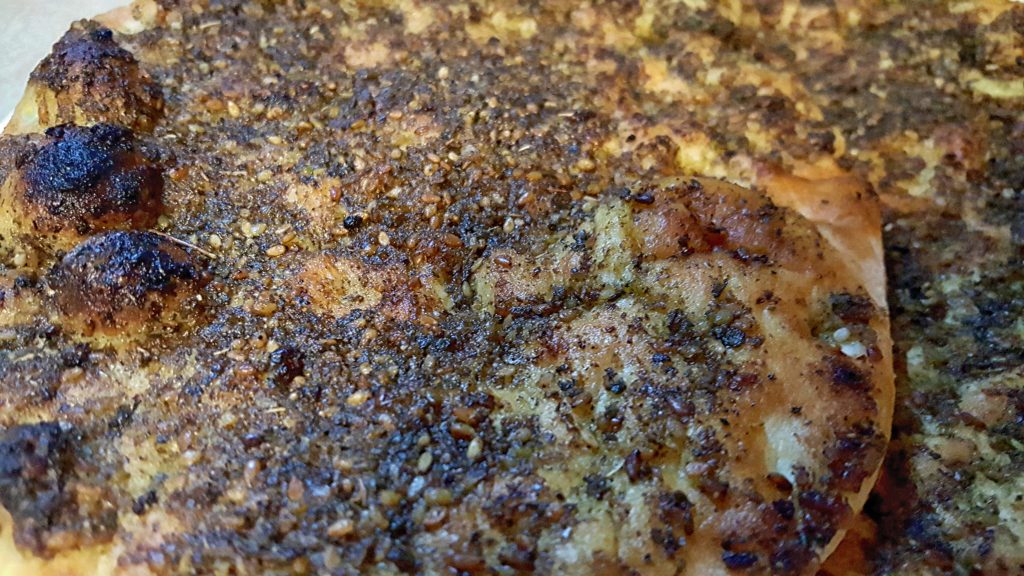
Za’atar bread
Eventually, Beirutes came to be made with many other fillings–ham is common, as are steak and chicken, but some shops in Sao Paulo are known for the wide variety of fillings, with multiple meat options, veggie options, and sometimes a fried egg in place of the lettuce. Za’atar seems to be less common these days but I like the idea of that connection to origins, that taste of home informing the cuisine of a new land. Also, it’s just damn tasty stuff.
Making Sandwiches
So I went up to Bridgeview, IL, to the same Alwatan Bakery I visited while writing about falafel, to pick up the za’atar bread you see above and a bag of freshly-baked pita. I also visited the Al-Amal Supermarket next door and picked up a 1 lb jar of za’atar and a round of Syrian Ackawi cheese–most recipes call for mozzarella, but I wanted to maintain that middle eastern connection beyond just the pita and za’atar. A few more stops netted me some nice tomatoes, sliced roast beef, ham, and a head of green leaf lettuce.
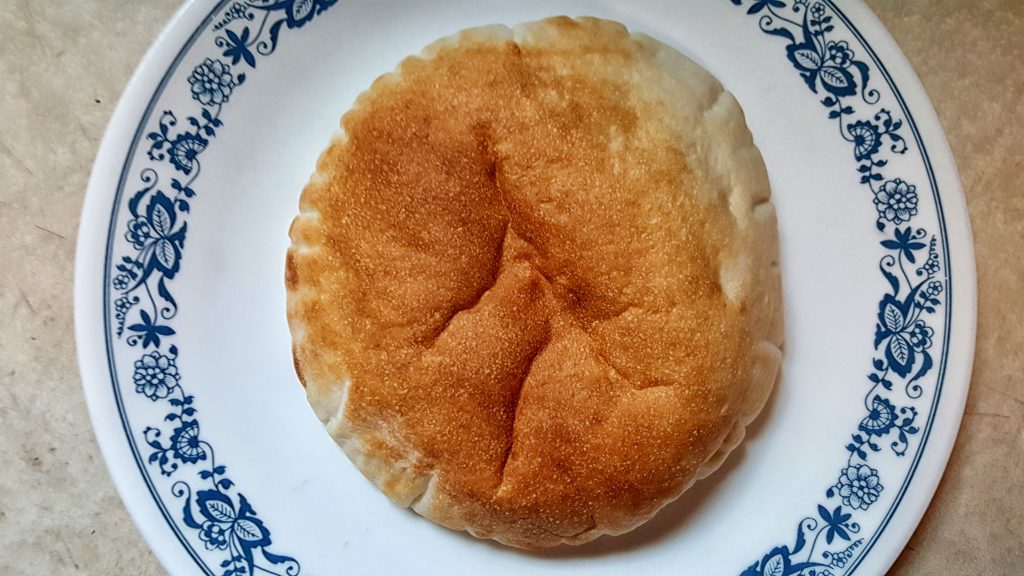
Pita from Al-Amal Bakery
I started by weighting and griddling the pita to warm it up and flatten it out a bit, as they tend to become bowl-shaped while baking, and whatever you may think of a bread bowl, it’s not a sandwich.
Probably.
As with other South American sandwiches we’ve covered, I also heated the fillings (sans lettuce) a la plancha. I started with 4 slices of roast beef arranged in a rough circle, covered in Ackawi cheese and slices tomatoes. I salted the tomatoes and sprinkled za’atar atop them, and griddled the pile with a little garlic-infused olive oil, covered to allow the steam to melt the cheese and cook the tomatoes. While this was going on, I sliced open the pita and spread a thin layer of mayonnaise on each side.
Once the beef, cheese, and tomatoes were ready, I carefully transferred them to one half of the pita, and placed a couple of lettuce leaves on the other half.
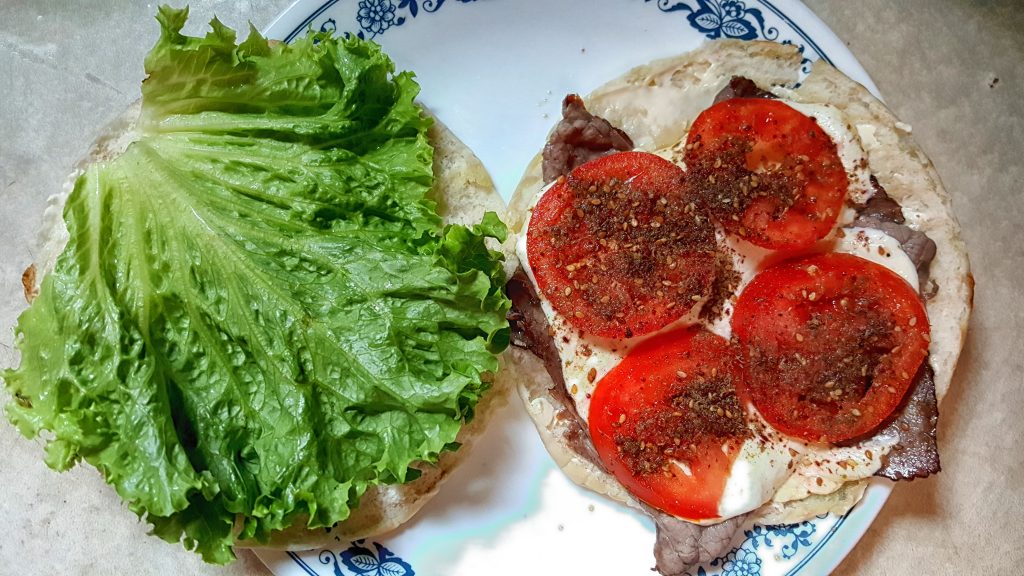
Beirute with roast beef
Placing the top piece of bread gives us a familiar sandwich-like, yet very thin profile.
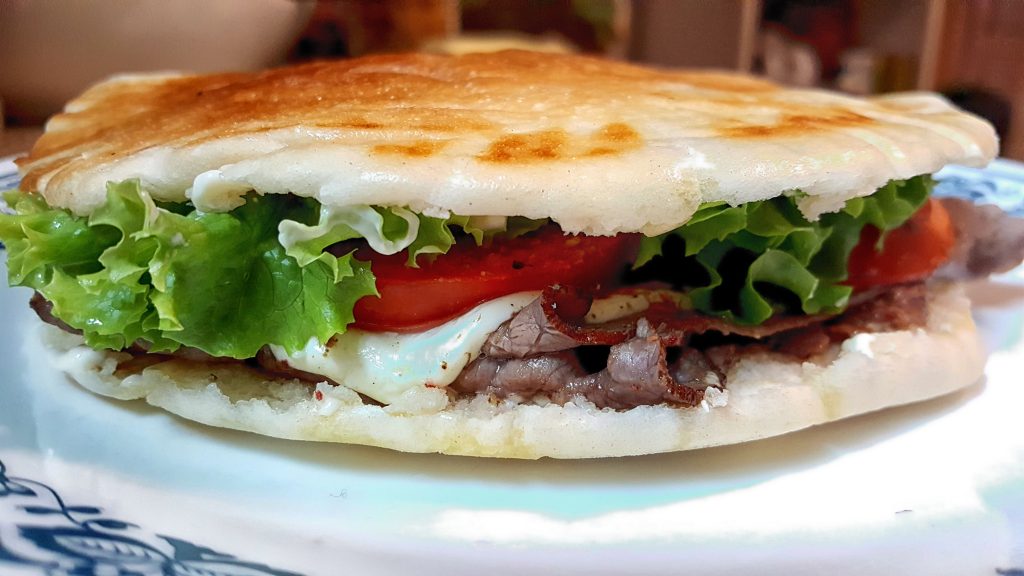
Beirute with roast beef
Beirutes in Brazil are commonly cut into quarters and eaten with a knife and fork. However, I found that once it was cut into quarters, each piece was easily picked up and eaten out of hand. I guess we’re just not as civilized as Brazilians.
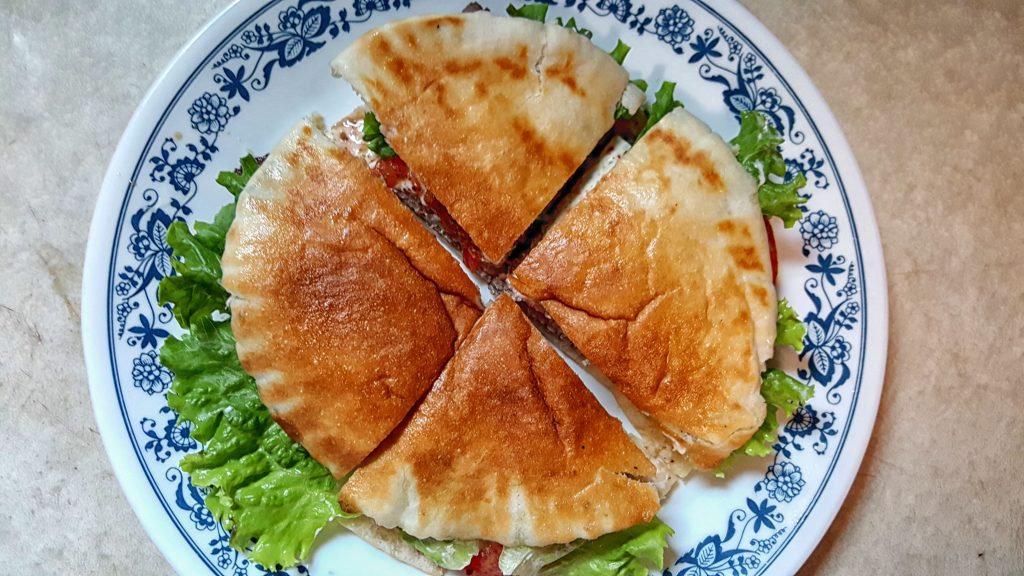
Beirute with roast beef
The Beirute is delicious–not terribly bready due to the flatbread base, hot and melty, juicy from the tomatoes, with a little crispness from the lettuce and the griddled bread. And of course the delightful flavor of za’atar, which is a terrific accompaniment to those tomatoes. Za’atar’s flavor is mostly thyme, with a little toastiness and nuttiness from the sesame seeds, and just a touch of the spicy-sour flavor of sumac. If you know how well tomatoes take on herb flavors, you know how well the za’atar works in this context.
I used the same technique to make a Beirute with ham.
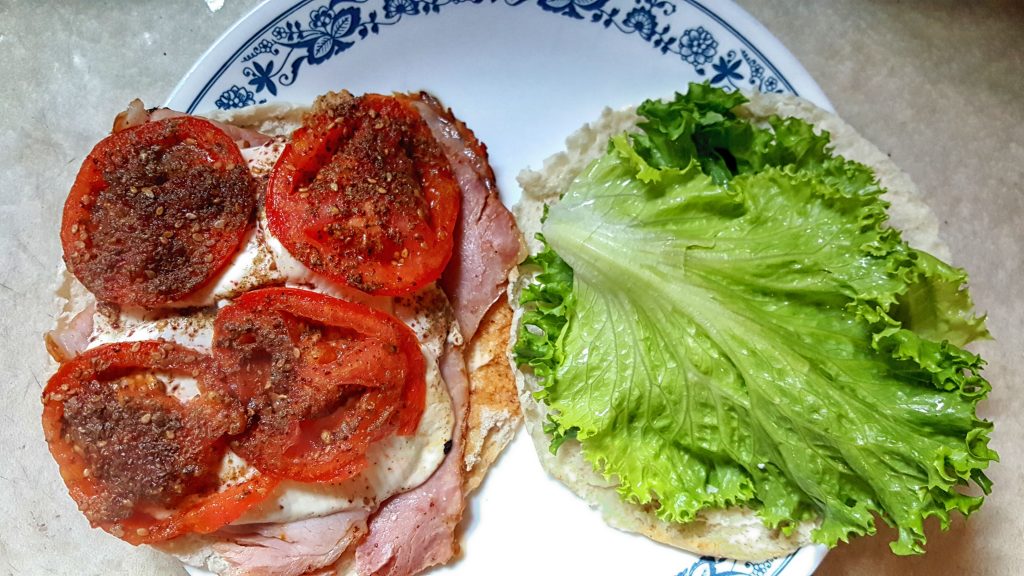
Beirute with ham
The ham seemed to want to pile up a little higher–or maybe I shouldn’t attribute motivation to my lunch. Let’s say that 4 slices of ham ended up being a bigger pile of meat than 4 slices of roast beef had been, and the sandwich ended up a little less flat. No less gorgeous though.
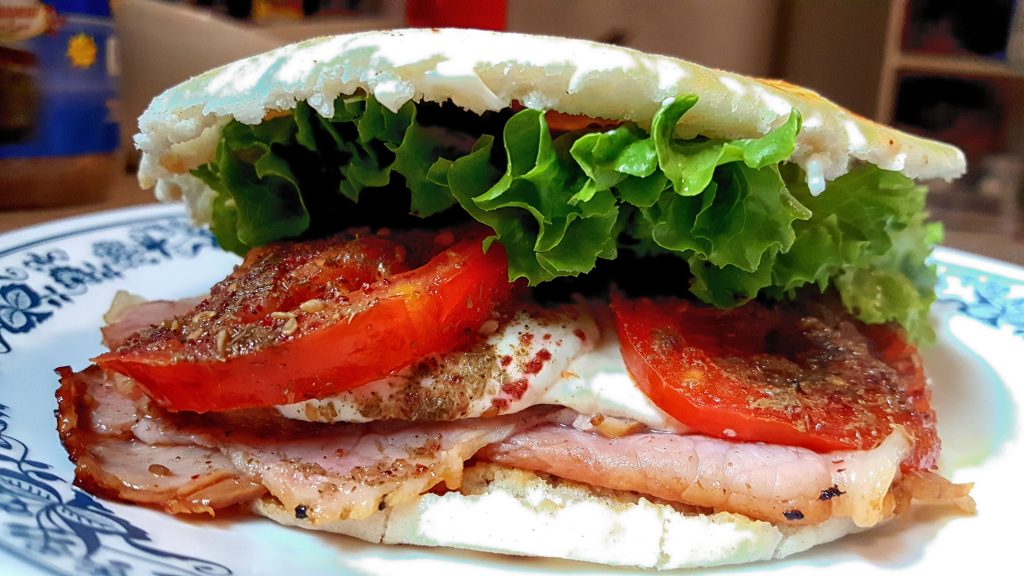
Beirute with ham
The ham was a slightly-less apt accompaniment to the tomato/za’atar combination, though still quite delicious. Once again I cut it into 4 pieces.
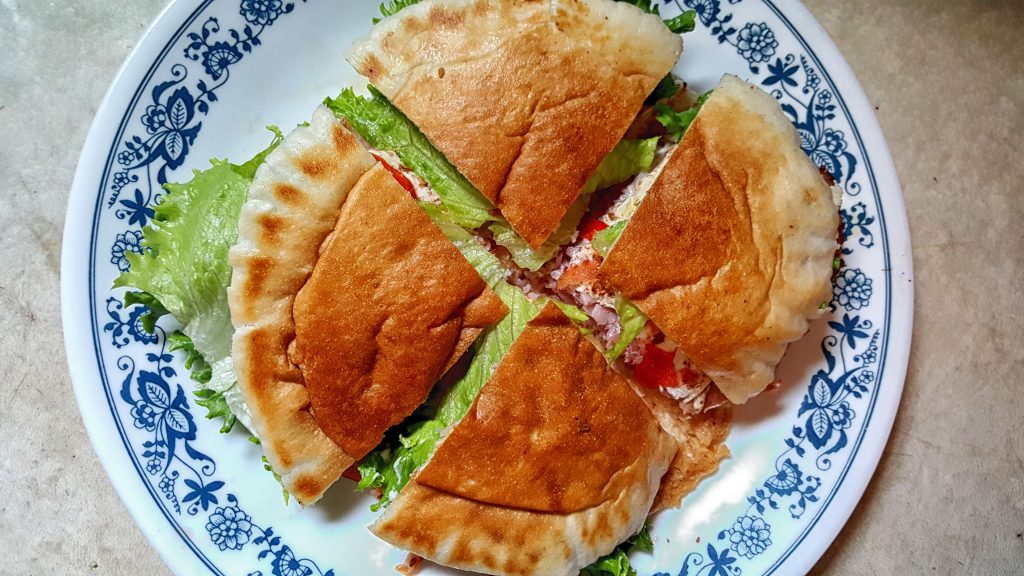
Beirute with ham
Though visually appealing, the higher-piled sandwich is less easy to pick up and eat, and I imagine it would be less manageable on a plate with fork and knife in the Brazilian fashion. Paulo Abbud, the nephew of the Farah brothers, says that the sandwich needs to be served quite thin.
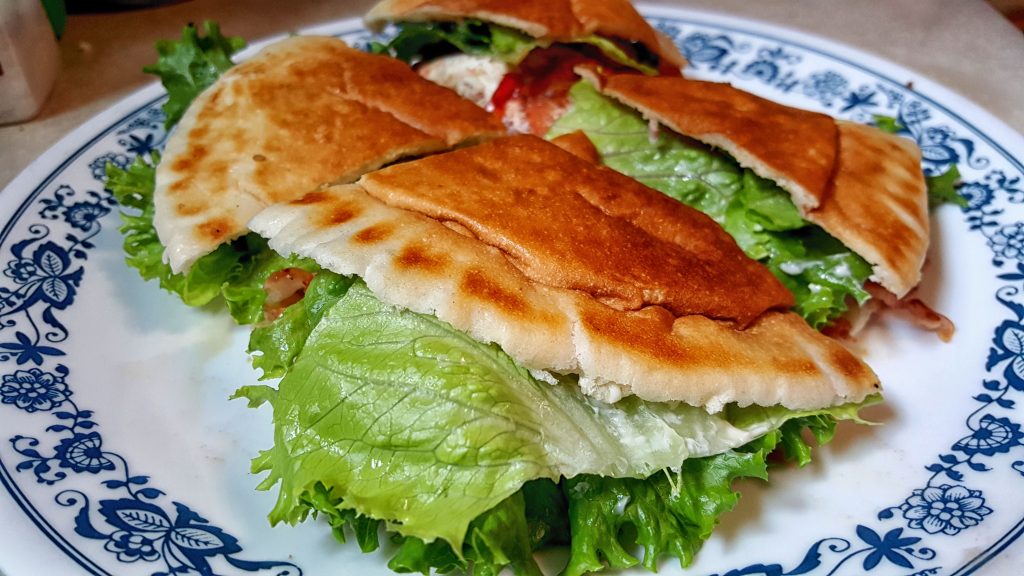
Beirute with ham
I also tried the variant with fried eggs in place of the lettuce. There, the ham worked as well or better than the roast beef, but the sandwich was a mess and did require a knife and fork.
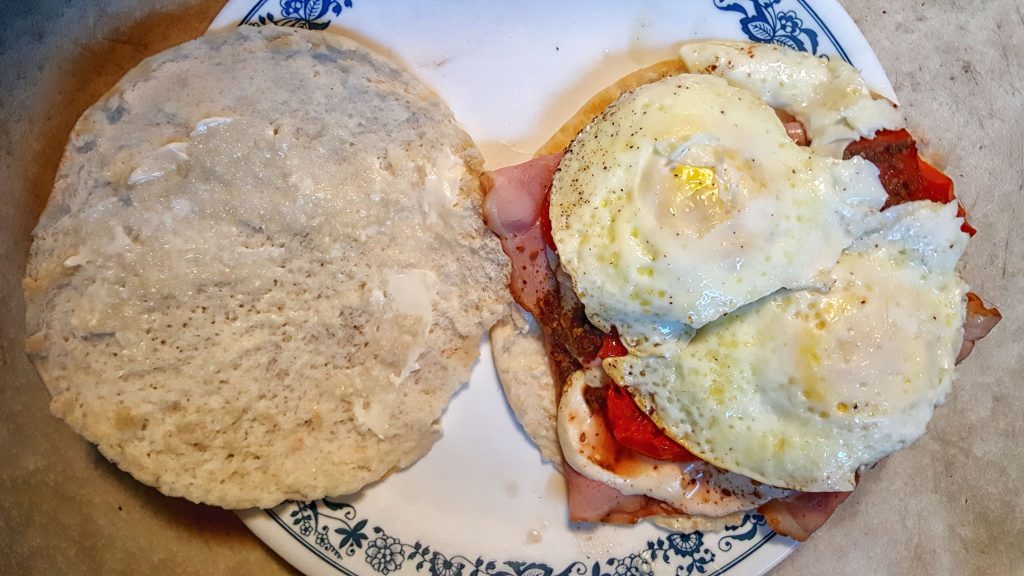
Ham and egg Beirute
Listen guys, South America is killing it at the sandwich game, aside from the whole knife-and-fork thing, what’s up with that? Regardless, this is another great example. Simple, yet terrific.

I like sandwiches.
I like a lot of other things too but sandwiches are pretty great











Randomly stumbled across this while missing the Beirute from back home 🙂
Just 2 things: pão sírio is not pita – it is not fluffy, but thin and very flat (almost like a flour tortilla, but not exactly that either). That’s why we eat the Beirute with fork and knife – the sandwich is just not hard enough to hold (also very big). Also, I never saw anyone substitute lettuce for egg, the eggs are just an addition (and the yolk should be runny, so it moistens the other ingredients). So yeah, it gets messy! 🙂